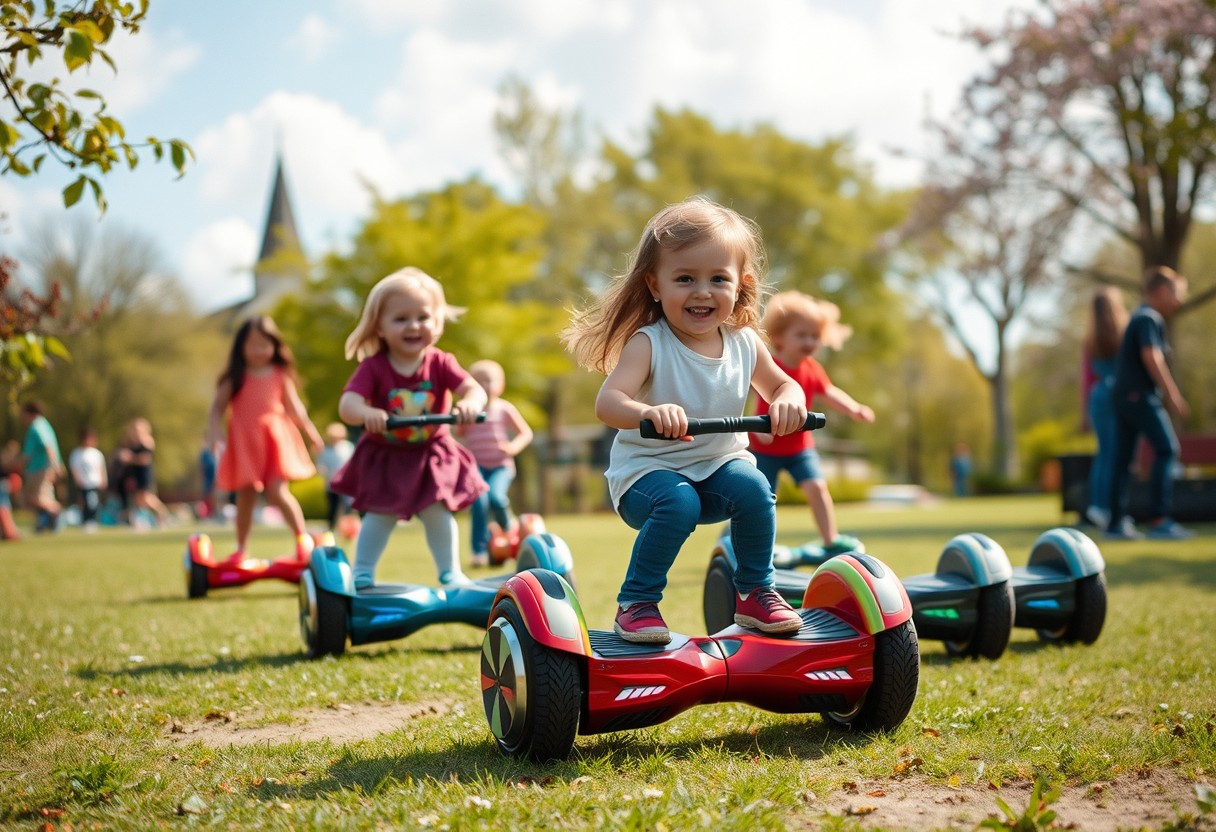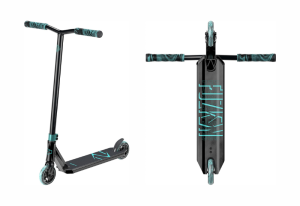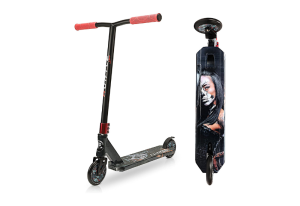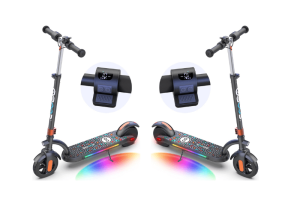There’s a world of excitement waiting for your child with hoverboards, but choosing the right one is crucial for ensuring both safety and fun. With the wide array of options available, you want to make an informed decision that balances performance, safety features, and ease of use. In this post, we’ll guide you through the best hoverboards for kids that have received top ratings, considering key factors like speed limits, safety certifications, and battery life, helping you find the perfect choice for your young rider.
Table of Contents
ToggleUnderstanding Hoverboards
While hoverboards have exploded in popularity over the past decade, many people still find themselves asking what exactly a hoverboard is and how it works. Understanding these devices is important before choosing the right one for your child. With their sleek design and promise of fun, hoverboards have become a favored mode of transport for kids and adults alike. However, it’s critical to choose a safe and reliable model, especially for younger riders.
What is a Hoverboard?
To put it simply, a hoverboard is a two-wheeled self-balancing scooter that allows you to ride while balancing on a platform with your feet. The modern hoverboard operates using electric motors and contains a series of gyroscopic sensors that help maintain stability. Your child stands on the board’s foot pads, and their movements dictate the hoverboard’s speed and direction. They can easily learn to accelerate, decelerate, and turn by leaning forward or backward and shifting their weight from side to side.
How Hoverboards Work
An important aspect of hoverboards is their sophisticated technology that enables smooth and controlled riding. When you lean forward, the sensors detect this shift in weight, and the electric motors respond by propelling the hoverboard forward. Similarly, leaning back will trigger the motors to slow down or move the board in reverse. The intricate balance of the gyroscopic sensors and smart acceleration allows for an intuitive riding experience.
A typical hoverboard runs on rechargeable lithium-ion batteries, providing enough power for enjoyable rides. Most models can reach speeds of up to 10 mph, with a range of about 6-12 miles on a single charge. It’s important to watch out for hoverboards with low-quality batteries, which can pose safety risks, such as overheating or even fires. Always look for models that have undergone rigorous safety tests and have certifications.
Benefits of Hoverboarding for Kids
With the rise of hoverboarding, there are numerous benefits that come with this fun activity. Not only does it provide a unique way for kids to travel, but it also promotes physical activity and outdoor play. Riding a hoverboard helps improve balance, coordination, and spatial awareness, important skills for children to develop as they grow. Your child will find joy in mastering hoverboarding, fostering a sense of accomplishment as they learn to navigate this exciting mode of transport.
The social aspect of hoverboarding cannot be overlooked either. It encourages kids to spend time outdoors with their friends, sharing laughter and experiences. As they ride together, they build friendships and create lasting memories. Moreover, many hoverboard models come equipped with features like Bluetooth speakers, allowing your child to enjoy their favorite tunes while riding, making the experience even more enjoyable.

Safety Features to Consider
Clearly, choosing the right hoverboard for your child means prioritizing safety features. While hoverboards can provide hours of fun, ensuring that they come equipped with necessary safety features is paramount. You can check out the 9 Best Hoverboards for Kids: Safe, Fun, and Affordable Options to help guide your decision. In this section, we will explore various safety aspects to consider, from speed control to battery safety.
Speed Control
Speed is a crucial safety feature, particularly for younger children who may not yet have the skills or reflexes to handle high-speed rides. Opt for hoverboards that provide adjustable speed settings, allowing you to set a maximum speed that suits your child’s skill level. Many manufacturers design hoverboards with beginner modes that restrict speeds to a more manageable level, which can significantly reduce the risk of accidents.
Additionally, it’s beneficial to select hoverboards that offer gradual acceleration. This feature ensures that your child can build confidence while riding, rather than being jolted into a fast pace right away. A hoverboard that takes smooth turns and has adjustable speed will keep your child safer while they learn to navigate different terrains.
Weight Limitations
For every hoverboard, there are specified weight limitations that must be adhered to for optimal safety and performance. Ensure that your child’s weight falls within the recommended limits provided by the manufacturer. Hoverboards designed for kids generally accommodate lighter weight ranges, yet it’s important to consider growth spurts and future use as well.
Moreover, ignoring weight limitations can lead to **serious safety risks**, including reduced stability and the hoverboard malfunctioning. If your child exceeds the weight limit, the hoverboard may struggle to operate efficiently, causing it to tip over or even malfunction. Therefore, selecting an option that not only fits your child’s current weight but also anticipates their growth is an excellent strategy for long-term use.
Consider checking the weight recommendations for different hoverboard models carefully. Though you might be tempted by a hoverboard that looks appealing, selecting one that fits your child’s weight requirements should always take precedence.
UL Certification
Consider the importance of UL certification as an important safety feature when selecting a hoverboard. The Underwriters Laboratories (UL) certification assures you that the hoverboard has been rigorously tested for safety standards. Hoverboards that hold this certification have undergone thorough assessments to ensure they are free from electrical malfunctions and potential fire hazards.
Because hoverboards are electric devices, UL certification signifies compliance with safety regulations. This means the materials used in manufacturing and the functionality meet specific safety criteria. It’s wise to avoid products lacking this certification, as they may pose risks to users.
Plus, investing in a UL-certified hoverboard not only minimizes the chances of accidents but also gives you peace of mind that your purchase has been vetted for safety. When choosing a hoverboard, look for the UL 2272 certification, as it is specifically tailored for electric rideables.
Battery Safety
Limitations imposed by battery safety are another critical consideration when purchasing a hoverboard for your child. Most modern hoverboards come equipped with lithium-ion batteries, which are relatively safe when manufactured correctly. However, **battery malfunctions** can occur, sometimes leading to overheating or even catching fire. Choosing hoverboards with reputable brands and verified battery safety measures is vital to prevent these incidents from occurring.
This means looking out for features such as short-circuit protection, overcharge protection, and temperature control. Many hoverboards have these precautionary measures built-in, but it’s important to confirm their presence with any model you consider purchasing. You should also keep in mind that safe charging practices are critical—ensure the hoverboard is charged with the correct charger and never leave it unattended while charging.
Age-Appropriate Models
For parents seeking to buy a hoverboard for their children, understanding age-appropriate models is crucial. Not all hoverboards are created equal; some are designed specifically for younger riders, while others are better suited for older children and teenagers. This ensures not only the enjoyment of riding but also maximum safety for your child. When selecting a hoverboard, consider weight limits, speed, and ease of control depending on your child’s age and experience level.
Best Hoverboards for Toddlers
To find the best hoverboards for toddlers, it is necessary to look for models that have a low speed limit and sturdy construction. Many brands now offer hoverboards designed specifically for younger riders, featuring training modes that help them learn how to balance and ride safely. Look for options with non-slip surfaces and strong stability features; these will provide your little one with the confidence they need to master their new ride.
Additionally, safety certifications like UL2272 should be a requirement when considering hoverboards for toddlers. This certification ensures that the hoverboard has been thoroughly tested for electrical safety and performance. Features such as LED lights and protective bumpers can also enhance the overall riding experience, making it enjoyable and safe for your toddler.
Top Picks for Kids Ages 6-10
To select the best hoverboards for kids aged 6-10, focus on models that combine performance with safety features. At this age, children are typically ready to graduate from the training hoverboards, so options with a moderate speed range and higher weight capacity will be appropriate. Look for hoverboards that come equipped with safety features such as speed limiters and dual braking systems for better control.
Best hoverboards for this age group often include designs that are both fun and functional, with vibrant colors and appealing aesthetics. Furthermore, many of these models are geared towards providing an engaging experience with features like Bluetooth speakers and customizable LED lights that your child would surely love. Their lightweight structure paired with a sturdy build ensures they can manage the hoverboard effectively while prioritizing safety.
Recommended Models for Teenagers
The best hoverboards for teenagers need to cater to their growing sense of adventure and independence. At this age, young riders can handle a higher speed and greater functionality. Many hoverboards designed for teens come equipped with advanced features such as an enhanced battery range, powerful motors, and durable wheels for off-road adventures. Look for models that offer both performance and safety, including features like adjustable speed modes and quick-reset functions.
Models that prioritize performance while ensuring rider safety often feature robust training modes that can assist your teen in honing their skills. These models typically have a weight capacity of up to 220 pounds, making them suitable for most teenagers, and they boast a more durable build to withstand rigorous use. When selecting a hoverboard for your teenager, it’s also important to consider options with high-quality battery systems to ensure longevity and reliable charging times.
Hoverboard Features and Specifications
Despite the excitement around hoverboards, it’s imperative to understand the various features and specifications that make a hoverboard both safe and enjoyable for your child. Knowing what to look for can significantly enhance your purchasing decision and ensure that you choose the best hoverboard for kids. Important features include wheel size, battery life, and added amenities like Bluetooth speakers and LED lights, all of which affect the overall riding experience.
Wheel Size and Terrain Compatibility
Features play a vital role in determining how well a hoverboard performs on different surfaces. Generally, hoverboards designed for rougher terrain come with larger wheels that are around 8 to 10 inches in diameter. This larger size allows for improved shock absorption and makes your child’s ride safer over bumps and uneven surfaces. Conversely, if you opt for a hoverboard with smaller wheels, it may be better suited for smooth pavements and indoor use.
Additionally, it’s worth considering the terrain compatibility of the hoverboard you select. Some hoverboards come with specialized features like all-terrain tires, which allow for use on various surfaces like grass, gravel, and dirt paths. By carefully examining these specifications, you can ensure that your child will have a safe and fun riding experience regardless of the environment.
Battery Life and Charging Time
Features like battery life and charging time are crucial when it comes to the usability of any hoverboard. Most models today offer a battery life of anywhere from 60 minutes to several hours on a full charge, which will determine how long your child can ride before needing to recharge. For kids who enjoy extended riding sessions, you might consider hoverboards that have larger batteries for longer operation times.
In addition to battery life, the charging time of the hoverboard is another significant factor to consider. Generally, a hoverboard may take anywhere from 1.5 to 3 hours to fully charge. If your child frequently uses the hoverboard, look for models with quicker charging times, allowing more time for riding and less waiting around for the battery to recharge.
With an awareness of these specifications, you can make a more informed decision to find a hoverboard that fits your child’s needs and usage patterns, ensuring that they have plenty of fun without interruptions.
Bluetooth Speakers and LED Lights
Bluetooth features have become a popular addition to hoverboards, allowing your child to connect their device and enjoy music while riding. This not only enhances the fun but also makes the experience more engaging. Many hoverboards now come with built-in Bluetooth speakers that provide clear sound and allow your child to play their favorite songs as they cruise around the neighborhood.
Furthermore, LED lights are a trendy feature that enhances visibility and safety during evening rides. These lights come in various colors and patterns, adding a fun aesthetic while also helping to ensure your child is seen by others in low-light conditions. Whether they want to show off their hoverboard skills or simply ride safely in the twilight hours, these features are practical and entertaining.
A hoverboard equipped with Bluetooth speakers and LED lights can make your child’s riding experience much more enjoyable. These additional features not only bring an element of fun but also contribute to safety, making them a worthwhile investment in your child’s hoverboard experience.
Weight and Portability
Life can get a bit complicated when it comes to the weight of a hoverboard, especially if you’re looking for something that is easy to carry or transport. Most hoverboards weigh anywhere from 20 to 30 pounds, which can be cumbersome for younger children. If your child will need to carry the hoverboard frequently—whether from home to the park or up and down stairs—lighter options might be necessary for ease and convenience.
Another thing to keep in mind is the size and design of the hoverboard. Some brands may even provide a carrying case or strap, enhancing portability for parents and kids on the go. By considering these factors and prioritizing weight, you can select a hoverboard that fits your family’s lifestyle while ensuring safety and fun for your child.
For instance, a hoverboard weighing less than 25 pounds can be beneficial, allowing for easier transportation, which is particularly useful for kids. If your child is using the hoverboard in a variety of settings—like at school, on family outings, or around neighborhood friends—lightweight options will make it simple for them to manage their ride without needing assistance.
Skating and Hoverboard Regulations
After considering a hoverboard for your child, it’s necessary to be aware of the regulations governing their use. These regulations are vital for ensuring not just the safety of your kids but also the safety of those around them. Different areas may have unique laws that dictate where and how hoverboards can be ridden, and understanding these can prevent potential fines or accidents.
Local Laws and Guidelines
On a local level, laws regarding hoverboard use can vary significantly. Many places classify hoverboards similarly to bicycles or skateboards, which means you must abide by certain traffic rules, especially in public areas. Some jurisdictions prohibit riding on sidewalks or in pedestrian zones, while others may have designated hoverboard-friendly paths. It’s advisable to check your local government website for specific regulations and guidelines that apply in your area to keep your child safe and compliant.
On top of that, local law enforcement may also have different standards regarding the age at which a child can legally operate a hoverboard. Some places may require supervision for younger riders or impose restrictions based on age, weight, or even experience. Being informed about these regulations will not only help you make safer choices for your child but also foster a sense of responsibility as they learn to navigate their environment.
Where Kids Can Safely Ride
Safely identifying appropriate locations for your kids to ride is crucial. Ideal settings include *parks, driveways, or designated ride areas* where your child can enjoy their hoverboard without the risk of colliding with pedestrians, vehicles, or obstructions. Open spaces provide ample freedom for your child to practice their balance and skills without feeling rushed or pressured by other riders or traffic.
To further enhance their enjoyment and safety, the ideal riding locations should be spacious and regularly monitored for hazards. Consider areas that are flat and free of gravel, large potholes, or other potentially dangerous obstacles. When possible, visit local skate parks since many now accommodate hoverboard riders, letting kids experience a new side of riding in a secure environment.
Protective Gear Recommendations
To maximize your child’s safety while riding a hoverboard, investing in the proper protective gear is necessary. Consider equipping them with a *well-fitted helmet, elbow and knee pads,* and wrist guards to minimize the risk of injury during falls. These items significantly enhance their protection and can help build their confidence as they gain experience riding their hoverboard.
Gear your child with high-quality protective equipment. A helmet should meet safety standards to ensure it provides adequate protection, while knee and elbow pads should be snug yet comfortable to allow for easy movement. When browsing for gear, prioritize brands that have excellent reviews for durability and effectiveness. By equipping your child with the appropriate protective gear, you help instill safe riding habits and encourage responsible use of their hoverboard.
Maintenance and Troubleshooting
Once again, ensuring the safety and longevity of your child’s hoverboard requires consistent maintenance and being proactive about troubleshooting potential issues. Proper care not only enhances performance but also secures a fun experience for your kids. Here are some necessary tips to consider.
Regular Maintenance Tips
Maintenance of your child’s hoverboard is crucial for optimal performance and safety. Regular checks on the battery, tire pressure, and exterior condition can make a big difference. Here are some important maintenance tips:
- Charge the hoverboard regularly to keep the battery healthy.
- Inspect the tires for any wear and tear.
- Wipe down the exterior to prevent dirt accumulation.
- Keep the hoverboard away from extreme weather conditions.
- Store the unit in a cool, dry place when not in use.
Perceiving the importance of these simple steps can extend the life of your hoverboard significantly.
Common Issues and Fixes
For any hoverboard, it’s necessary to be aware of potential problems that might arise during use. Common concerns include battery failure, uneven tire wear, and connectivity issues with Bluetooth or controls. Generally, troubleshooting these issues can often be accomplished without professional assistance.
The most common issue involves the battery not holding a charge, which you can usually fix by checking connections or replacing the battery if needed. Additionally, if you notice the hoverboard not responding to your commands, double-check the remote control or app connections. Keeping a close eye on the performance can help you quickly identify when something is amiss.
When to Seek Professional Help
An important aspect of hoverboard ownership is knowing when it’s time to call in the experts. If you encounter issues that go beyond basic troubleshooting, such as persistent electrical problems, strange sounds, or if the unit won’t power on, it’s crucial to seek professional assistance. These concerns can indicate more serious internal malfunctions, which you should address to ensure safety.
Understanding the limitations of your DIY troubleshooting is key. Some problems may require special tools and expertise that only certified hoverboard technicians possess. Addressing these issues promptly can help prevent further damage and maintain the overall integrity of your child’s hoverboard.
Final Words
Taking this into account, when selecting the best hoverboard for your kids, safety should be your top priority. It’s crucial to look for models that come with safety certifications and are equipped with features such as anti-slip foot pads, UL 2272 certification, and reliable battery management systems. By ensuring that your hoverboard meets these safety standards, you can provide a truly safe and enjoyable riding experience for your children.
Additionally, considering child-friendly features like speed limits and weight limits enables you to find the perfect balance between fun and safety. By choosing the right hoverboard, not only can you enhance your child’s outdoor activity and coordination skills, but you can also give them a fantastic way to have fun with friends. So, as you shop for hoverboards, remember to keep your child’s safety and enjoyment at the forefront of your decision-making process.
FAQ
Q: What should I look for when choosing a hoverboard for my child?
A: When dicking out a hoverboard for kids, prioritize safety features such as UL 2272 certification, which ensures the hoverboard has passed electrical and fire safety tests. Consider the weight limit, battery life, maximum speed, and size of the hoverboard to ensure it is age-appropriate. Look for models with additional features like LED lights, Bluetooth speakers, and app connectivity for added fun and safety.
Q: Are hoverboards safe for young children?
A: Hoverboards can be safe for children, especially when they are of appropriate age and size. Make sure to choose a model specifically designed for kids, which typically means it has lower maximum speeds and better stability. Always ensure children wear proper safety gear including helmets, knee pads, and elbow pads when riding to minimize the risk of injury.
Q: How fast do hoverboards for kids usually go?
A: Most hoverboards designed for kids typically have maximum speeds ranging from 6 to 10 mph. Speed can vary based on the model and the rider’s weight. For younger children, it’s advisable to select models that have lower speed settings to ensure safety while still providing a fun experience.
Q: What is the average battery life of a kid-friendly hoverboard?
A: The average battery life for hoverboards intended for kids usually ranges from 60 to 120 minutes of continuous use, depending on the model and the rider’s weight. It’s imperative to check the specifications of the hoverboard to understand charging times and how long it can last with regular use. Many hoverboards feature battery indicator lights to help riders monitor power levels.
Q: Are there any hoverboards that are better suited for beginners?
A: Yes, many brands offer beginner-friendly hoverboards that include features such as lower speed settings, anti-slip footpads, and wider bases for improved balance. Look for models with a learning mode that allows new riders to gradually increase their speed and confidence. Some hoverboards also come with training wheels or stabilization features that can help beginners gain their footing safely.







